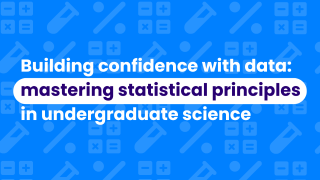1. Flip the learning
Flipped learning methodology has become increasingly common over the last decade, and returning to in-person teaching has been a valuable method for boosting student preparedness. The strategy involves requiring students to participate in an activity before attending an in-person lab, lecture or workshop. This may be reading an article, watching a video or completing an online task.
This initial exposure to content means students arrive with a base level of knowledge. Direct teaching time is now much more valuable, with students being more confident to undertake the tasks, ask questions of higher thinking and develop a deeper understanding of the theory (Loveys & Riggs., 2019, Teo et al. ,2014).
How can we help?
Our LabSims and Smart Worksheets provide ready-made pre-lab activities that students can use as an introduction to the practical and analytical techniques they’ll soon be undertaking in labs. This not only provides an opportunity for preparation but also offers transparency on the skills and techniques students will be exploring in practical sessions.
The University of Exeter provided access to interactive LearnSci resources a week before lab classes, allowing students to practise skills at their own pace before entering the lab. This resulted in 97% of students feeling more prepared for their lab classes. Increased preparedness and confidence allowed students to feel more confident in what they were going to be doing in the labs.
The University of Westminster also used them to help students prepare for a set of super-labs designed to cover a wide range of skills, and found that students were much more confident engaging with the techniques after completing pre-lab activities.



.png)